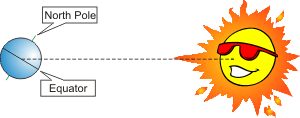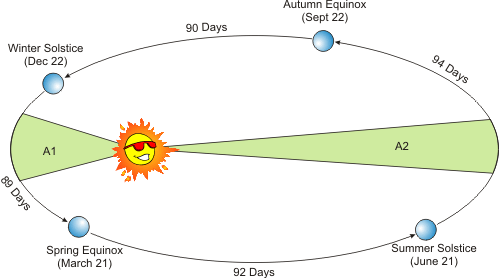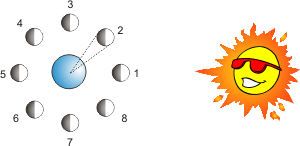
The Calendar



In modern times it seems we live and die by the calendar. We have project deadlines, people to see, things to do. We pretty much take the calendar for granted. We mark our schedule, set a reminder and move on. But what do you really know about this miracle of ancient technology. It turns out that the humble calendar as a very colorful past. It has been influenced by many different cultures and ideas. This brief article will explore some of its key developments.
Since prehistoric times, calendars were used to mark the observance of certain astronomical phenomena. One very important astronomical phenomena is the passing of the seasons. Our ancient ancestors observed the Sun peek above the horizon in the morning, rise in the sky during the day and descend back into the earth at dusk. It was obvious early on that at its highest point in the sky, angle the Sun made with the horizon changed as the year progressed. The time that the Sun achieves its highest point in the sky is known as the Summer Solstice and occurs on the first day of summer. The day that it rises the least in the sky is known as the Winter Solstice and is the first day of winter. One of the earliest measurements made by ancient man was likely the number of days it takes to go from one Summer Solstice to another. This number of days is of course equal to a year. (It should be noted that the time these events occur is exactly opposite if you live in the southern hemisphere.)
If you live on the equator, twice a year the Sun rises to a point directly overhead. This point in time is called an equinox. These days mark the beginning of autumn and spring (Autumn Equinox and Spring Equinox). Note that the Spring Equinox is also known as the Vernal Equinox. One additional observation the ancients would have made is that the number of days that separates these seasons is not the same. That is, the number of days between the first day of spring to the first day of autumn is a bit more than the number of days between the first day of autumn to the first day of spring.
What the ancients did not know was what caused the seasons. We are of course privy to this information. What causes the seasons is the orbit of the Earth around the Sun. But this is only part of the story. There would in fact not be any seasons if it were not for one very important fact: the Earth is tilted on its axis. From the diagram below it can be seen that the sun is tilted (at about 23.5°).

This diagram illustrates a typical situation for summer in the northern hemisphere. Note that the northern half of the Earth is tilted towards the Sun. In winter the Earth swings around to the other side of the Sun, and the northern hemisphere is then tilted away from Sun and hence receives less light (and as a result colder weather).
It turns out that the Earth actually speeds up and slows down as it swings around the Sun. It doesn't travel in an exact circle around the Sun either, its orbit actually forms an ellipse. It is this elliptical orbit that accounts for the different lenghts of the seasons. Johannes Kepler figured this out back in the 17th century. This requires a little explaining so try to stay with me. In the diagram below (not to scale of course), the shaded areas (A1 and A2) represents the exact same period of time in the orbit of the Earth around the Sun. Kepler discovered a law of motion that states that as the Earth sweeps around the Sun in its elliptical orbit, it must sweep out equal areas in equal time spans. To satisfy this law, the Earth must travel faster in the winter when it is closer to the Sun (yes, the Earth is actually closer to the Sun in the winter -- it is the tilt that accounts for the weather).

Calendars have existed since the dawn of recorded history. The Babylonians were known to have one as early as 3000 BC, but their calendar had the slight disadvantage of being only 360 days long. An improved calendar with a 365 day year was developed by the Egyptians. They are also credited with innovating the quadrennial leap year -- a year of 366 days once every four years. From its birth at the Nile, this advanced calendar eventually became known to the West.
Only two years before his unfortunate demise on the Ides of March (March 15th), Gaius Julius Caesar -- general, statesman, and political reformer -- introduced the Egyptian calendar to Rome. Commissioned in 46 BC, it became known as the Julian Calendar. The Julian calendar improved on the Egyptian version by incorporating a more accurate 365.25 day year. To accommodate this the Julian calendar introduced the concept of the leap year by adding an extra day to February every fourth year. This calendar is essentially identical (in concept) with the one use today -- with one minor exception.
After the Julian calendar had been in use for some time, it became apparent that the seasons were occurring earlier and earlier in the year. Astute astronomers soon discovered the cause of this phenomenon. It was found that the Vernal Equinox (the point at which the Sun crosses the equator on its northward journey across the Earth) occurs after an interval of about 365.2425 days (and they did this without so much as a pocket calculator) as opposed to the 365.25 day year implicit in the Julian calendar. Although this difference amounts to only eleven minutes a year, over the course of centuries it became quite noticeable.
A little analysis shows that every century of the Julian Calendar is about 3/4 of a day longer than it should be. The problem would be solved if three days out of every four days in a century are eliminated. This is precisely what Pope Gregory XIII did. The goal of keeping the calendar in sync with the seasons was achieved by simply tweaking the leap-year rules a bit. Pope Gregory decreed that ...
Rule 2 effectively removes the excess three days in every four centuries.
To correct the accumulated lag caused by the 365.2425 day Julian calendar, Pope Gregory further proclaimed that October 5, 1582 would become October 15, 1582 (kind of like setting your clock for daylight savings time). Thus, the calendar and the Sun become synchronized once again and the Gregorian Calendar is born.
Of course civilization progresses and today we can measure the year even more accurately. So what is a year exactly?
Well, a calendar year is exactly what Pope Gregory XIII decreed, ie. 365.2425 days. If you examine the span of time that it took the Earth to make one complete orbit around the Sun in the year 2000, a year is 365.24218967 days. This type of year measurement is called a tropical year. It turns out there are a number of different ways to define a year, many with exotic sounding names such as draconic (apply your own punch line here), anomalistic, and Besselian, but in the interest of not boring you to death I will continue with...
There is of course more to our calendar than a 365.2425 day year. The ancient Chaldeans (this is what the Babylonians were called in their calendar fame years) are the ones credited with dividing the year into twelve months (their months had 30 days each, for a 360 day year). These months were meant to correspond with the lunar (okay, that means moon) cycle which actually occurs over about 29.53059 days. The lunar phases are caused by the way light falls on the Moon as it orbits around the Earth. The diagram below illustrates this (see phase 2 for a crescent Moon). The following table gives the common names used for the eight named lunar phases.

| 1 |  |
New Moon |
| 2 |  |
Crescent Moon (Waxing) |
| 3 |  |
First Quarter |
| 4 |  |
Gibbous Waxing |
| 5 |  |
Full Moon |
| 6 |  |
Gibbous Waning |
| 7 |  |
Last Quarter |
| 8 |  |
Crescent Moon Waning |
The month names in use today were originated by the Romans (the Roman calendar originally only had ten months with a total of 304 days -- evidently they didn't like the winter very much so they did not bother naming the last 61 days of the year). Eventually, however, they added two additional month names (Ianuarius and Februarius). The months of the Julian Calendar are listed below in their original order.
| Julian Month | Days | Notes | Gregorian Name |
|---|---|---|---|
| Martius | 31 | Named after the god Mars | March |
| Aprilius | 30 | Origin unknown | April |
| Maius | 31 | Named for goddess Maia | May |
| Iunius | 30 | Named for goddess Juno | June |
| Quintilis | 31 | Quintillis - Fifth month | July |
| Sextilis | 31 | Sextilis - sixth | August |
| September | 30 | From Latin septimus - seventh | September |
| October | 31 | From Latin octo - eighth | October |
| November | 30 | From Latin novem - nine | November |
| December | 31 | From Latin decem - ten | December |
| Ianuarius | 31 | The god of the doorway (Latin: ianua) | January |
| Februarius | 29,30 | Named after Roman ceremony of purification | February |
In 44 BC after Caesar was assassinated, Quintilis was changed to Julius (July) to honor him. Caesar Augustus was Julius' successor and the Roman senate changed Sextilis to to Augustus (August).
Note that March (Martius) was the first month of the year in the Julian calendar. January became the first month of the calendar year around 450 BC (there is a bit of uncertainty about how this switch actually came about).
The year is of course also divided into seven-day weeks. The seven day week either originated with Moses in Egypt or (again) the Babylonians (depending on who you ask). In any case, for Moses the Sabbath (from Hebrew sabbat - to cease) was holy. It was the day God rested from creating the world. The weekday names we have today, however, were for the most part named after pagan Anglo-Saxon gods as can be seen from the table below
| Day | Origin |
|---|---|
| Sunday | The day of the Sun |
| Monday | The day of the Moon |
| Tiwsday (Tuesday) | Named after Old English god Tiw |
| Wodensday (Wednesday) | Named after Old English god Woden |
| Thorsday (Thursday) | Named after Old Norse god Thor |
| Frigsday (Friday) | Named after Old English goddess Frige |
| Seternesday (Saturday) | Named after Roman god of agriculture Saturn |
Given a date, it is possible to compute the day of the week that the date falls on. There are a number of ways to do this. Here we present Zeller's congruence formula (devised by Christian Zeller):
$$w = \left(d + \Bigl\lfloor\frac{13(m+1)}{5}\Bigr\rfloor + y + \Bigl\lfloor\frac{y}{4}\Bigr\rfloor + \Bigl\lfloor\frac{c}{4}\Bigr\rfloor - 2c \right) \textrm{mod 7,}$$ whereWe can test the formula by entering the respective parameters below:
Computing the date for most holidays is fairly straight forward since they typically fall on some well defined day in a particular month. Easter presents a particular challenge, however. The date of the observance of Easter is such that it corresponds with the lunar cycles. Easter is observed on the first Sunday after the first full moon that occurs on or following the Vernal Equinox. Got that? Let me recap: Vernal Equinox occurs (i.e. first day of spring). Wait for first full moon. Next Sunday is easter. Simple eh.
For those interested in such things, a detailed formula for computing the month and day of Easter is given below (get out your calculator).
a = Year%19 b = floor(Year/100) c = Year%100 d = floor(b/4) e = b%4; f = floor((b+8)/25) g = floor((b-f+1)/3) h = (19*a+b-d-g+15)%30 i = floor(c/4) k = c%4 l = (32+2*e+2*i-h-k)%7 m = floor((a+11*h+22*l)/451) Month = floor((h+l-7*m+114)/31) - 1 Day = (h+l-7*m+114)%31 + 1
In this formula the percent sign (%) is used to designate the remainder. For
example 5%3 would give 2, since five divided by three gives a remainder of two. The
floor function gives the largest integer less than or equal to the
given number. For example floor(5.6) would return the number five.
For positive numbers floor just gives the integer portion of the number.
We can use this formula to compute the date of Easter from the year:
There is actually a neat little trick that uses the calendar called the Magic Matrix Force. To try it out just click on the link.
This article has actually only touched on some key aspects of the calendar. There is much, much more to learn. But I think that from this you can see that all our ancient ancestors weren't just sitting around the camp fire and singing Kum-ba-ya. Many of them were gazing up at the sky and wondering why!